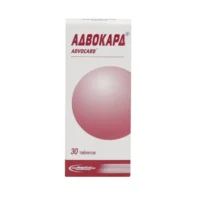Description
Alergocort (triamcinolone) Ointment 1 mg/g. 15 g. Tube №1
Ingredients
Active ingredient: Triamcinolone acetonide 1 mg/g. Other ingredients: (insert other ingredients here).
Mechanism of Action
Triamcinolone, the active ingredient in Alergocort ointment, exerts its pharmacological effects by inhibiting the production of inflammatory mediators, thereby reducing inflammation and itching. This mechanism of action makes it an effective treatment for various skin conditions.
Pharmacological Properties
The pharmacological properties of triamcinolone acetonide include potent anti-inflammatory and anti-pruritic effects, making it beneficial for managing corticosteroid-responsive dermatoses.
Indications
Indicated for: Relief of inflammatory and pruritic manifestations of corticosteroid-responsive dermatoses.
Contraindications
Contraindications: Hypersensitivity to any component of the product.
Side Effects
Common side effects of Alergocort ointment may include skin irritation, burning, or dryness at the application site. Prolonged use or excessive application may lead to skin thinning.
Usage Instructions
Dosage: Apply a thin layer of the ointment to the affected area 2-4 times daily.
Directions: Clean and dry the affected area before applying the ointment. Rub gently and thoroughly.
Benefits Compared to Analogues
Clinical studies have shown that triamcinolone ointment is comparable in effectiveness to other corticosteroids but with a lower risk of side effects such as skin thinning. This makes Alergocort a preferred choice for long-term use in chronic dermatoses.
Suitable Patient Groups
Alergocort ointment is suitable for use in various patient groups, including adults, children, and the elderly. However, individual dosage adjustments may be necessary based on age and medical condition.
Storage Conditions and Shelf Life
- Storage: Store at room temperature away from moisture and heat.
- Shelf Life: Check the expiration date on the packaging and do not use the product if expired.
Packaging Description
The Alergocort ointment is available in a 15 g tube, ensuring convenient and hygienic application of the product.





